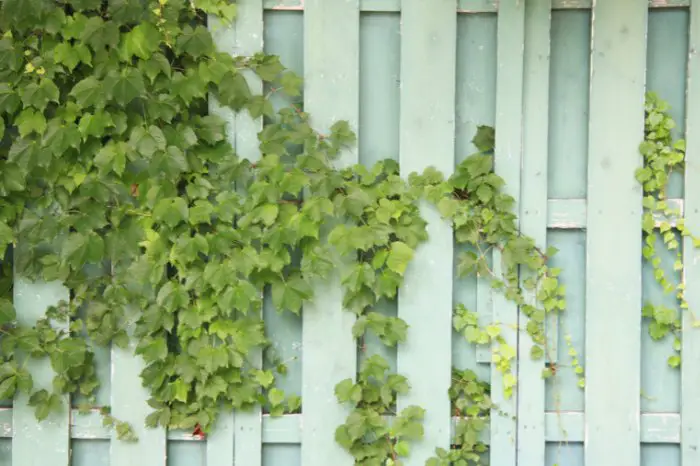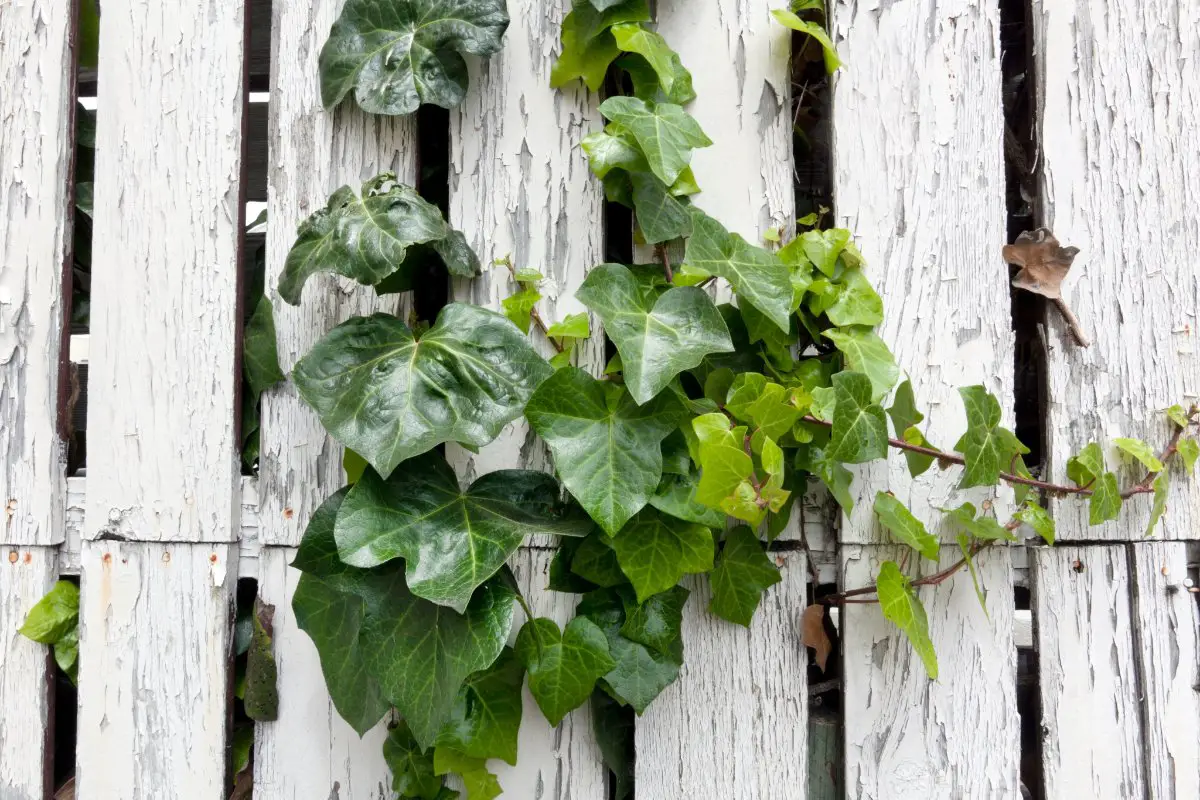Ivy can add an elegant touch to any garden. Knowing how to grow ivy on a fence can take your garden to a whole new level. Growing ivy can be relatively easy and adds beautiful green coloring to any fence.
No matter the size of your fence, it can be a great surface to grow ivy on. The ivy will spread quickly and can create a beautiful cascading effect. However, ivy can be potentially invasive and some varieties should avoid being grown in certain locations.
Contents
All About Ivy – How To Grow Ivy On A Fence
Ivy is a genus of 12–15 species in the Araliaceae family. It consists of evergreen climbing or ground-creeping woody plant. It is native to Europe, Asia, and North Africa and it is grown all throughout the world.
There are many different varieties of ivy. Ground-creeping ivy grows along the floors of forests. Climbing ivy can grow on many different surfaces including trees, rocks, houses, fences, and other surfaces both man-made and natural.
Ivy can spread to take up a large surface area, which is why it is considered invasive in some areas. In fact, in certain regions, the growth of ivy is discouraged as it can spread quickly and take away from other native plants.

While it does vary on the variety of ivy, it can grow to be 20 to 80 feet tall and three to 50 feet wide. Different factors can contribute to the amount ivy spreads including variety, location, natural resources, and growing surface.
While ivy is typically green, the coloring and shape can vary by the type of ivy. Ivy is low maintenance and can grow in a variety of conditions. It often does best in partial to full shade and can be grown indoors or outdoors.
Growing Ivy On A Fence
There are many reasons a person may choose to grow ivy on the fence. Ivy can add a beautiful addition to the fence with its trailing vines. Ivy can also provide additional privacy to your property which can be beneficial.
Ivy can grow rapidly on fences, covering them in lovely green leaves. It can grow on a variety of leaves including chain link, privacy, and lattice fences. However, if ivy takes over a wooden fence it may cause staining or even rot.
How Fast Does Ivy Grow On A Fence?
It takes ivy about three months to become fully established on your fence. After that, it can grow up to nine feet annually. It can quickly cover your whole fence with cascading trails.
Click Here to Get Info About:
- How To Grow Fritillaria Uva Vulpis In 6 Quick Steps – Beautiful!
- A Detailed Guide On How To Grow Scotch Bonnet Pepper
Best Ivy For Fences
There are several different varieties of ivy you can grow, some of which are better for fences than others. Some of the best types of ivy for fences include English ivy, Boston ivy, and Persian ivy.
English Ivy – How To Grow Ivy On A Fence
English ivy is one of the most popular types of ivy you can grow. However, it is important to note that in some areas English ivy is invasive so you should avoid growing it. It has lovely greenish-white blooms and will quickly cover fences.
Hirt’s Baltic English Ivy 48 Plants – Hardy Groundcover -1 3/4″ Pots
Boston Ivy
Thanks to its fast-spreading nature, Boston ivy is great for growing on fences. Its striking green leaves turn a beautiful dark red-purple in fall. Boston ivy does well in full sun to partial shade.
Persian Ivy
Another great option for fences is Persian ivy. The deep green leather leaves are heart-shaped and look beautiful growing on fences. Persian ivy can grow in part to full shade.
Take Out Time to Also Read:
- How To Grow Elderberry From Seed In 4 Easy Steps!
- How To Grow Ginseng Indoors – A Guide To Maintaining Valuable Medicinal Plants
How To Plant Ivy On A Fence
Growing ivy on a fence is easy and looks great. It can grow on many different types of fences and can also grow in many different conditions.
Till The Ground And Prepare A Hole
Before you get planting, you need to prepare the soil around your fence. Till the soil and remove any weeds, rocks, and grass from the area right along your fence.
Once the soil is ready you can dig your hole. Dig a hole in the middle of the fence approximately 12 inches from the fence.
If transplanting an ivy seedling, the hole should be four to sixes inches deep. For seeds, the hole should be about one inch deep.
Plant Your Ivy And Add Compost
Once your holes are ready you can add your ivy plant or seeds to the hole. Fill in the holes with soil and add some compost. Water the ground thoroughly and water regularly as your ivy plant establishes.
Train The Ivy – How To Grow Ivy On A Fence
Train your ivy so that it will successfully grow up your fence. Stretch the tendrils of your ivy plant along the ground under the fence on both sides of where you planted it. Once the tendrils root, they will develop lateral shoots.
Weave the lateral shoots around your fence at the bottom to help establish them on your fence. You may need to secure the shoots onto your fence until they are established. Continue to weave the ivy up the fence as it grows until it does not need any more help.
How To Grow Ivy On A Fence: What You Should Know
Ivy can be a great addition to your fence whether you have a lattice, chain link, or privacy fence. Not only does ivy look beautiful cascading leaves but it can also provide additional privacy to your home as well.
Some of the best types of ivy for fences include English, Boston, and Persian. With just a bit of work, you can successfully establish ivy on your fences. It can take about three months to establish and then it can continue to grow up to nine feet a year.
You may need to prune your ivy it seems to be getting out of control. While it is easy to maintain, you can add compost and regularly water it to encourage growth. Most ivy can grow in partial shade to full shade and some varieties will even do well in full sun.
Do you have any questions regarding how to grow ivy on a fence? If so, please ask your questions on growing ivy in the comment section down below.
A garden is a place that relaxes us and reflects our personal style, it’s a place to spend time with loved ones and grow our own fruits and vegetables. Maybe you’re looking for design inspiration or plant selection, or you’re concerned about garden privacy, shady areas, or pests, but don’t worry, you’ve come to the right place.

